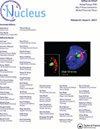橡胶树培养中嫁接与砧木的相互作用
IF 4.5
3区 生物学
Q3 CELL BIOLOGY
引用次数: 0
摘要
本研究的目的是研究橡胶树幼苗地上部和根系的发育以及营养状况,选择具有较强活力和砧木所需特征的无性系,并将其与减少幼苗生产时间联系起来。提高亲和性和均匀性的程度,以便了解它们作为商业无性系砧木的潜力,并保证生产者在橡胶种植园的出血期有足够和均匀的生产力。该实验在巴西本文章由计算机程序翻译,如有差异,请以英文原文为准。
INTERAÇÃO ENXERTO VS PORTA-ENXERTOS NA CULTURA DA SERINGUEIRA
The objective of the present work was to study the development of the aerial part and the root system and the nutritional situation in young rubber tree plants, selecting clones with greater vigor and desired characteristics in a rootstock, relating them to the reduction of production time of seedlings, increasing the degree of compatibility and consequently uniformity in order to know their potential for use as rootstock for commercial clones and guarantee the producer an adequate and uniform productivity during the bleeding period of his rubber plantation. The experiment was carried out at APTA Regional at Pindorama, São Paulo State, Brazil. The experiment was conducted in the nursery in plastic bags using a randomized block design with seven treatments and four replications. Each plot was composed of 120 plants, totaling 3360 useful plants. The treatments consisted of plants from the six clones PB 235, RRIM 600, GT 1, PR 261, IAN 873, Tjir 1 x Tjir 16 and unselected seeds (SNS). At 10 months all clones are ready for grafting. Clone IAN 873 presents grafting conditions at 8 months, with greater precocity compared to the others. Regarding the diameter of the stem, it can be said that the best results were respectively from the clones IAN 873, GT 1 and PB 235. That in the endosperm there was a higher concentration of zinc and copper. As for the concentration of calcium in the seed, a greater presence was observed in the shell, while the other macronutrients and total protein occurred in greater amounts in the endosperm. Within foliar nutrients, there is no significant difference between micronutrients. Keywords: Hevea Brasilienses, Genetic interactions, Clones.
求助全文
通过发布文献求助,成功后即可免费获取论文全文。
去求助
来源期刊

Nucleus
CELL BIOLOGY-
CiteScore
5.60
自引率
5.40%
发文量
16
审稿时长
13 weeks
期刊介绍:
Nucleus is a fully open access peer-reviewed journal. All articles will (if accepted) be available for anyone to read anywhere, at any time immediately on publication.
Aims & Scope: The eukaryotic cell nucleus is more than a storage organelle for genomic DNA. It is involved in critical steps of cell signaling and gene regulation, as well as the maintenance of genome stability, including DNA replication and DNA damage repair. These activities heavily depend on the spatial and temporal “functional” organization of the nucleus and its integration into the complex meshwork of cellular scaffolding.
Nucleus provides a platform for presenting and discussing cutting-edge research on all aspects of biology of the cell nucleus. It brings together a multidisciplinary community of scientists working in the areas of:
• Nuclear structure and dynamics
• Subnuclear organelles
• Chromatin organization
• Nuclear transport
• DNA replication and DNA damage repair
• Gene expression and RNA processing
• Nucleus in signaling and development
Nucleus offers a variety of paper formats including:
• Original Research articles
• Short Reports
• Reviews
• Commentaries
• Extra Views
• Methods manuscripts.
 求助内容:
求助内容: 应助结果提醒方式:
应助结果提醒方式:


